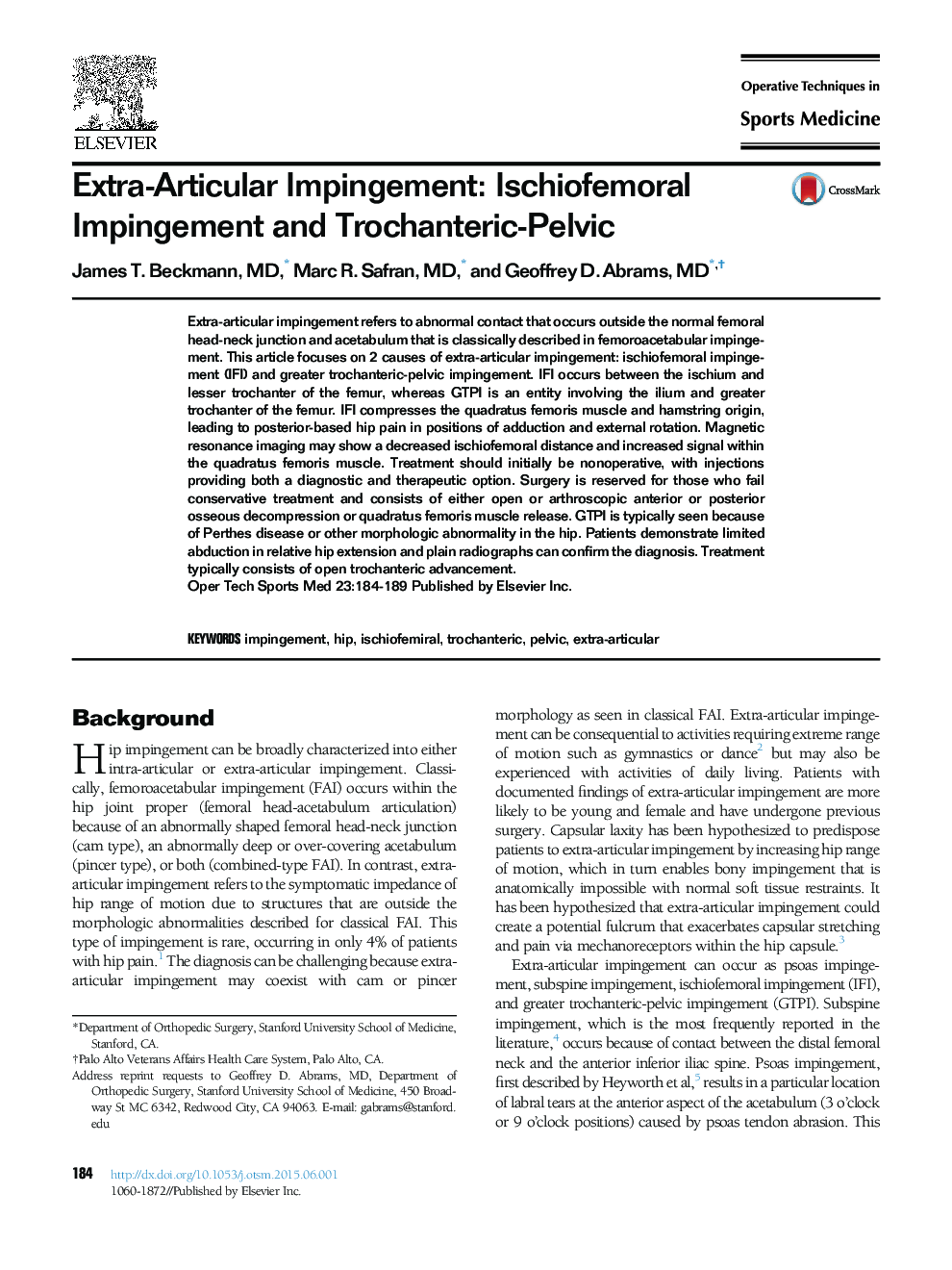| Article ID | Journal | Published Year | Pages | File Type |
|---|---|---|---|---|
| 4079495 | Operative Techniques in Sports Medicine | 2015 | 6 Pages |
Extra-articular impingement refers to abnormal contact that occurs outside the normal femoral head-neck junction and acetabulum that is classically described in femoroacetabular impingement. This article focuses on 2 causes of extra-articular impingement: ischiofemoral impingement (IFI) and greater trochanteric-pelvic impingement. IFI occurs between the ischium and lesser trochanter of the femur, whereas GTPI is an entity involving the ilium and greater trochanter of the femur. IFI compresses the quadratus femoris muscle and hamstring origin, leading to posterior-based hip pain in positions of adduction and external rotation. Magnetic resonance imaging may show a decreased ischiofemoral distance and increased signal within the quadratus femoris muscle. Treatment should initially be nonoperative, with injections providing both a diagnostic and therapeutic option. Surgery is reserved for those who fail conservative treatment and consists of either open or arthroscopic anterior or posterior osseous decompression or quadratus femoris muscle release. GTPI is typically seen because of Perthes disease or other morphologic abnormality in the hip. Patients demonstrate limited abduction in relative hip extension and plain radiographs can confirm the diagnosis. Treatment typically consists of open trochanteric advancement.
